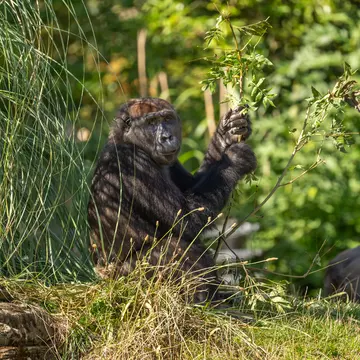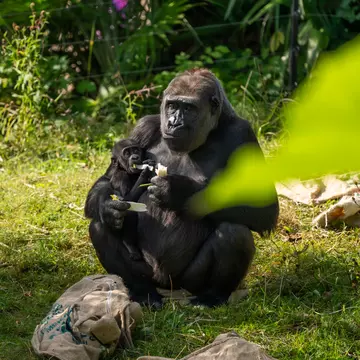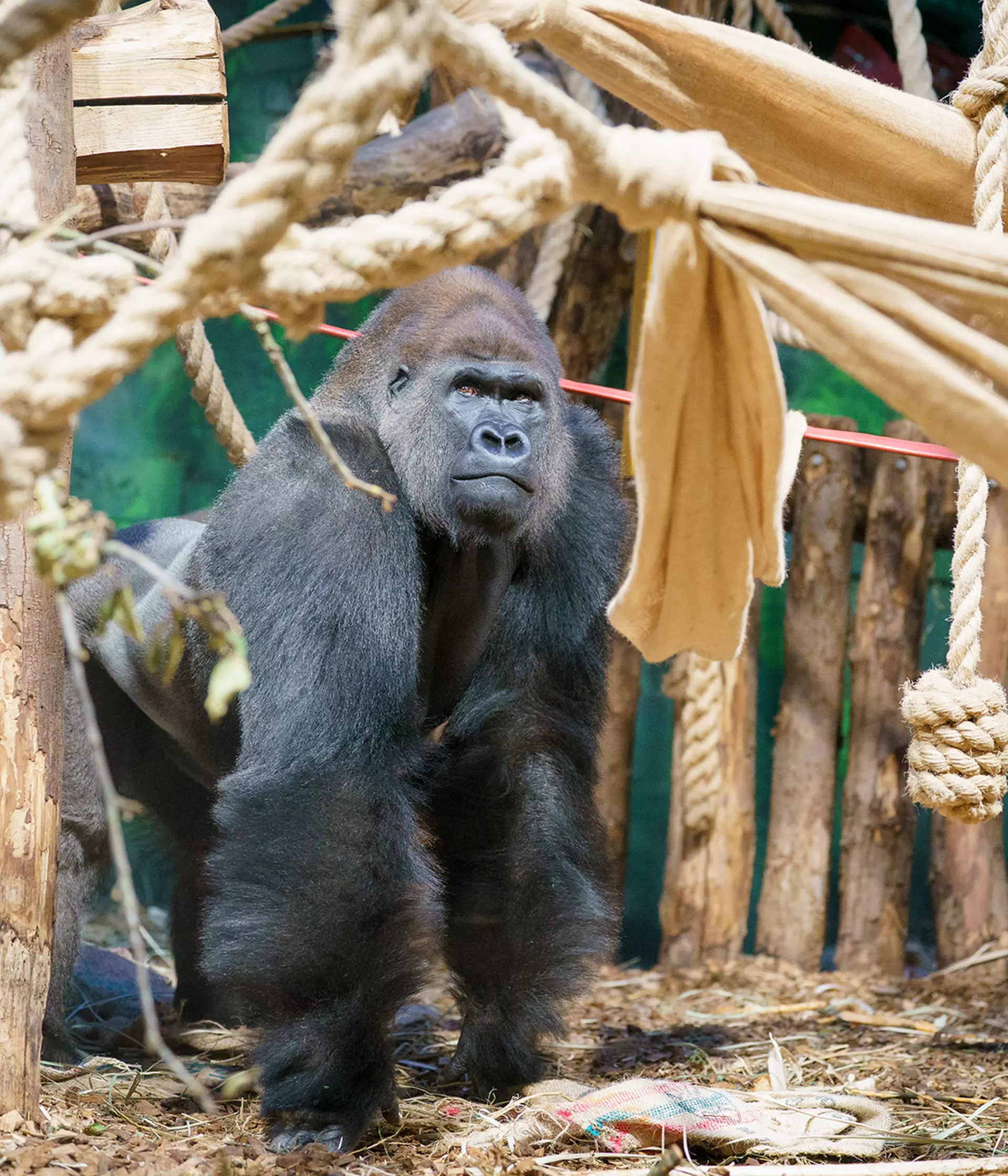
London Zoo is home to Western lowland gorillas. Learn all about them with our gorilla facts before visiting our troop in Gorilla Kingdom.
Eight things you didn't know about gorillas
- There are four subspecies of gorilla, and they are the largest of all apes.
- Male gorillas can weigh up to 200kg, which is over the weight of two men.
- Gorillas share 98.4% of their DNA with humans.
- Mountain gorillas are the only great ape that's increasing in number, with an increase in 50% over the last 30 years. This is a huge wildlife conservation success story, but there are still only 1000 mountain gorillas left.
- Gorillas usually give birth to a single baby every four to six years, which makes every individual even more important because they breed so slowly.
- The eastern lowland gorilla is the largest gorilla and is most at risk, over 50% of eastern lowland gorillas have been lost since the 1990's. These gorillas are being pushed to the brink of extinction by coltan mining, an alloy used in mobile phones.
- Gorillas are gardeners of the forest and are crucial to their ecosystems, spreading seeds and creating clearings for plants to grow. This makes gorillas crucial to maintaining the biodiversity of their forests, as ecosystem engineers they create a ripple effect to protect wildlife across the forest.
Difference between western lowland gorillas and mountain gorillas
Western lowland gorillas have shorter hair than the mountain gorilla because they live in hotter rainforests, and they often have a red tinted hair on the top of their head. The western lowland gorilla also eats much more fruit than the mountain gorilla, with 30% of their diet made up of fruit whereas mountain gorillas eat no fruit. western lowland gorillas often climb trees in the wild to find fruit, whereas mountain gorillas rarely climb.
Western lowland gorillas typically live in groups of a single silverback and several females and young. Aggression is often avoided by threat displays such as chest beating. Gorillas often only glance at each other as staring can be rude in gorilla company. They have a brown to black coat with mature males developing a whitish-silver saddle on their back resulting in the name ‘silverbacks’. They have longer arms than legs, brown eyes and no tail.

What do gorillas eat?
Gorillas are herbivorous and feed on fruits, leaves, seeds and stems. Our gorilla troop at London Zoo eat 21kg of food every day.
Gorilla lifespan
Gorillas live to be around 50 years, but conservationists are still learning their average lifespan.

Where do gorillas live?
Cameroon, Central African Republic, Gabon, Congo and Equatorial Guinea.
Gorilla threats
- Deforestation for farming, palm-oil and timber.
- Bushmeat trade and souvenir trophies, as their meat has even been found in markets in London as part of the increasing international bushmeat trade.
- Mining for coltan, an alloy which helps store electricity in mobile phones and laptop, is a major threat to eastern lowland gorillas. Coltan mining is causing rainforest destruction of their habitat and an increase in hunting for bushmeat because the locations are so remote. The coltan mining industry is also bad news for people too, and is one of the most exploitative industries on earth. By recycling old electronics, buying less often and more sustainably can all help reduce the demand on their habitat.
- Often diseases which effect people also effect gorillas, which shows the importance of addressing wildlife health and human health together.
Gorilla conservation
Our researchers at ZSL are working to better understand the bushmeat trade to help people living with wildlife. By working together to help reduce local people's reliance on wildlife, we can better protect gorillas. At Mikongo Conservation Centre in Gabon, we've worked with local people to develop low impact tourism based on viewing of forest wildlife, to provide a sustainable income for both park and local community. This project also monitored the health of gorillas and their visitors to protect gorillas from illnesses like the common cold, which can be fatal for gorillas. Diseases like Ebola, are also a real threat to western lowland gorillas and local people.
We've also worked in Virunga National Park in the Democratic Republic of Congo to help to help their park authorities protect wildlife, including the mountain gorillas in the south of the park and eastern lowland gorillas in the north. While in the Dja conservation complex in Cameroon, we're helping people live with wildlife by supporting local communities which live alongside gorillas.
From the fresh pitter patter of tiny feet to massive new arrivals, get the latest Zoo news straight into your inbox.
